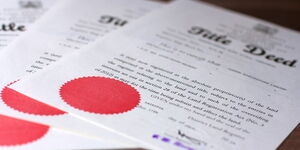For 55 years, the Kenyan flag has carried the story of the struggles and the victory of the country both locally and internationally.
The story of the flag is a manifestation of issues facing the country since independence.
In Africa, almost all the current national flags were created in the years following the Second World War and in the run-up to the end of colonialism.
[caption caption="Soldiers with the flag"] [/caption]
[/caption]
According to Encyclopedia Britannica, the ensigns can be grouped in two major categories; those former French colonies which “tend to have vertical tricolours and are generally green-yellow-red” and those of the Anglophone which “have horizontal tricolours and often include green, blue, black, and white.”
Kenya falls in the latter.
History of the banner can be traced back to the flag of Kenya Africa Union which had red, black and green colours representing the blood shed for liberation; the race of black people as a nation and the natural wealth of Africa.
However, it was initially only black and red with a central shield and arrow.
Later, the symbolism was altered and black was separated from the green by the red implying the African could only get back his land through blood.
KANU was later formed and it picked the same design as KAU and introduced a cockerel and battle axe.
KADU also picked the same design the difference being in the third colour, red for KANU and white for KADU.
[caption caption="Kenyatta handing over the flag"] [/caption]
[/caption]
As Kenya moved towards independence, some within Kenyatta’s circle wanted to use the KANU flag as the national flag.
“It is not without significance that our neighbours, Tanganyika and Uganda, both saw it fit to use the ruling party flag simply as a basis for the national flag,” Tom Mboya declared on one occasion.
According to theelephant.info fierce opposition from KADU led to the introduction of the white strip.
The flag retained and updated the elements of the KAU flag, such as the shield and spears while the cockerel and axe were omitted.
On approval by the government, the symbolism of the white strip to stand for peace and not the earlier multiracial society.












